Mediterranean Sea, October 1803. Near Tripoli, Berber pirates capture the American frigate USS Philadelphia. The United States undertakes actions unprecedented in its short history. They send a special unit of marines whose task is to recapture or destroy a lost ship ...
At the turn of the 18th and 19th centuries, Berber pirates were the true terror of the Mediterranean trade routes. Their ships were based in North African ports, the so-called Berber Coast:Tripoli, Oran, Tunis and Algiers.
Muslim sea robbers sometimes ventured as far as the northern part of the Atlantic Ocean. In addition to merchant ships, the destination of their plundering expeditions were the coastal settlements of Spain, Portugal, France, the Netherlands, Great Britain and even Iceland.
It is estimated that between the 16th and 19th centuries they kidnapped between 800,000 and 1,250,000 Europeans . They were traded at slave markets in Morocco and Algeria, and sometimes they were released after receiving a generous ransom. In addition, the Berbers profited significantly from the tribute that European countries paid them in exchange for safe navigation. Even maritime powers such as France and Great Britain did.
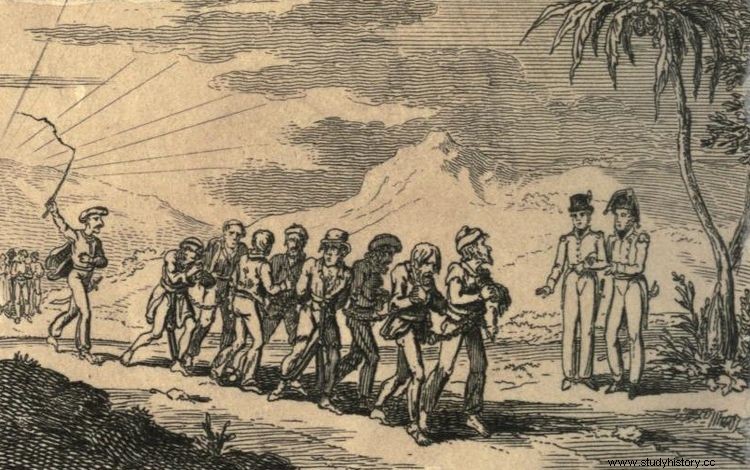
Column of Christians enslaved by pirates (source:public domain).
Americans targeted by pirates
In October 1784, Moroccan pirates seized the first American ship, the "Betsey" brigandine. It was then that the release of the ship was negotiated thanks to the mediation of the Spaniards. They also advised the US authorities to start paying the Moroccans tribute to avoid similar events in the future.
Already in July 1785, another two ships fell prey to pirates - this time from Algerians. Now the situation was much more difficult. Tripoli, Algiers, Oran and Tunis demanded as much as 660,000 for the release of crews and units. dollars while American negotiators had only 40,000. dollars. The sailors spent over ten years in captivity. In 1795, the United States reached an agreement with Algiers and paid him a huge sum of over $ 1 million in exchange for the release of 115 people. This amount was approximately 10% of the US budget at the time!
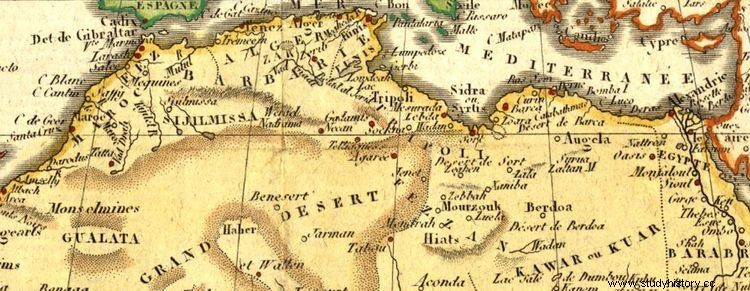
Berber coast of the Mediterranean Sea. It was there that the dramas of the American sailors took place. A fragment of the map of Africa from 1806 (source:public domain).
The Yankees are going to the Mediterranean Sea
The Americans' patience was slowly waning. Increasingly, there were voices calling for building your own navy and securing the interests of the state in the Mediterranean basin. The matter was of the utmost importance, as ¼ of the US exports at that time went to this part of the world.
In 1801, Thomas Jefferson, a supporter of the violent solution to the problems of pirates, became president of the United States. The Pasha of Tripoli, Yusuf Karamanli, demanded 225,000 from the new US administration. tribute dollars. When refused, he declared war on the United States . In response, the Americans dispatched a squadron of warships under the command of Commander Edward Preble to the Mediterranean.
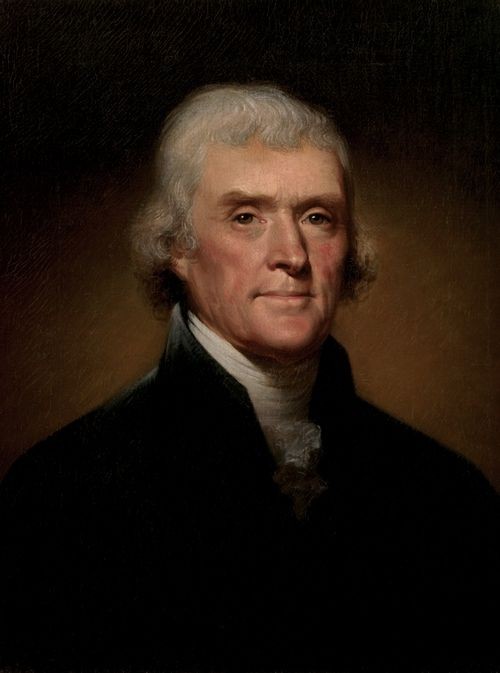
President Thomas Jefferson. It was he who decided that pirates should not be paid, but should be fought (portrait by Rembrandt Peale; source:public domain).
Unlucky pursuit of the USS "Philadelphia"
US Navy ships fought several victorious duels with pirate ships and led a blockade of the Berber coast, but sailors lacked accurate maps of these waters. As it quickly turned out, it was going to cost the Americans dearly.
On October 31, 1803, the frigate USS Philadelphia, commanded by Captain William Bainbridge, ran aground while chasing a small pirate ship. Despite persistent attempts under the fire of Tripolitan forts and pirate fleet units, the ship was not released.
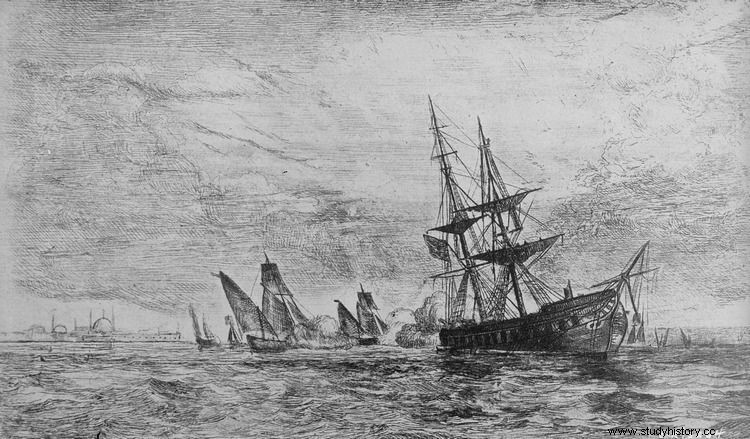
The USS Philadelphia frigate ran aground and then in even more trouble ... (source:public domain).
After a while the frigate ran aground on its own by the tide, but it was too late to escape. Captain Bainbridge was taken prisoner with 306 sailors. The Philadelphia - a modern ship armed with 40 cannons - was to be included in the pirate fleet. Preble wasn't going to let that happen. The frigate was to be recaptured, and if that was impossible, destroyed.
The crazy plan of Lieutenant Decatur
A young, cheeky officer, Lieutenant Stephen Decatur, volunteered to perform this task. He chose 84 of the best and toughest men that could be found in an American squadron . They were to enter the Port of Tripoli aboard a small, captured pirate ship, disguised as a Maltese merchant ship. Decatur even managed to get a Sicilian pilot to help confuse the guards at the port if necessary.
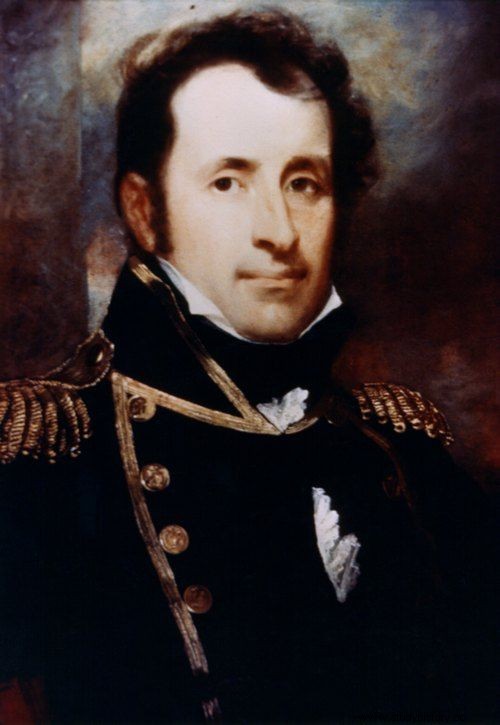
Portrait of Stephan Decatura by John Wesley Jarvis. The contentiousness can be seen immediately (source:public domain).
On the night of February 16, 1804, a "Maltese" ship with Americans on board called Tripoli. The small vessel swam to the side of the Philadelphia, and the Sicilian pilot explained to the pirates that his vessel had broken off its anchor during a storm and had to dock to the larger vessel to wait out the night. The explanations sounded convincing, but one of the pirates must have seen something disturbing. A shout pierced the darkness: Americans!
It's called running in for fire!
But it was too late for any reaction. Eight Marines stormed the frigate under the command of Sergeant Solomon Wren, real thugs. Armed only with broadswords, axes and knives, so as not to make noise, they gave no chance to the few guards on board the Philadelphia . The ship was quickly taken under control.
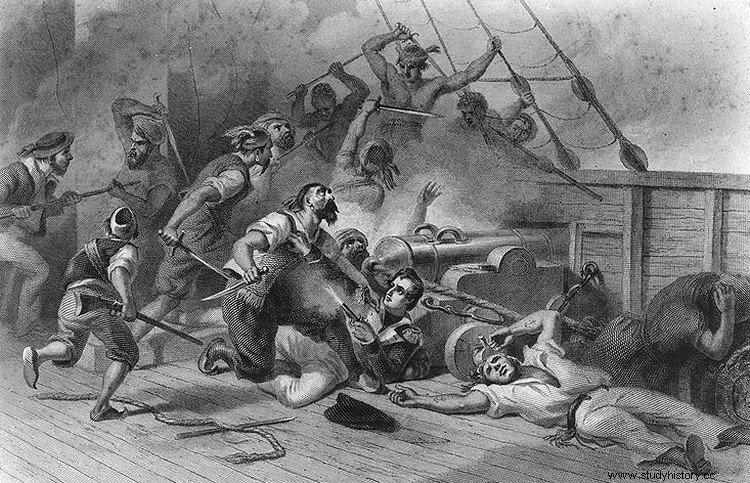
And so Decatur fought the Berbers six months after the action described in the article (source:public domain).
However, Lieutenant Decatur decided that there was no way to safely get the frigate out of port and ordered it to be destroyed. Fire was set on hotspots in Philadelphia within twenty minutes. Despite shelling from the Tripolitan coastal batteries, the Americans withdrew safely to the high seas . The retreat was secured by the cruising USS Siren, ready to intervene if the pirates wanted to pursue the escapees.
The first "commando" of the American fleet
The success of the mission was complete. The Philadelphia was destroyed and no American died during the operation . Even the British admiral Horatio Nelson praised Decatura's courage and ingenuity, who said that it was the boldest achievement of this era . The lieutenant became a national hero in the USA, and as a reward for his action he was promoted to the rank of commander.
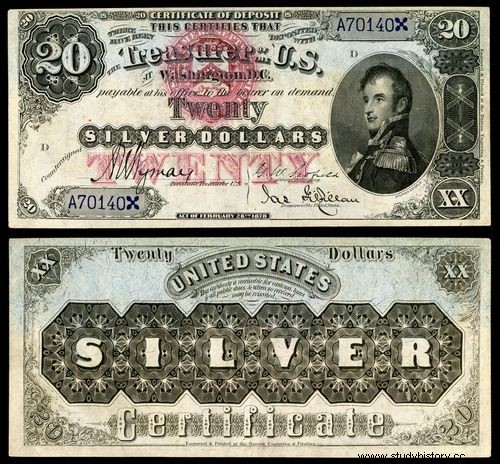
Stephen Decatur even found a special silver series of $ 20 (source:public domain).
Only the crew of the "Philadelphia", who had been in captivity for over nineteen months, had no cause for satisfaction. . On June 4, 1805, Pasha Karamanli and the Americans signed a peace treaty in which both parties undertook, inter alia, to exchange prisoners. However, this agreement did not contribute to solving the problem of Berber pirates.
10 years later, a squadron of American ships returned to these waters. It was commanded by, of course, Commodore Stephen Decatur. But that is a topic for another article.
